Friction
Friction is the force that opposes movement.
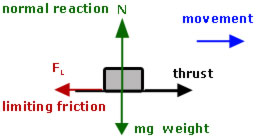
1.
The limiting frictional force ( FL )is directly proportional to the normal contact force ( N )
note: limiting frictional force is the maximum frictional force
2.The ratio of the limiting frictional force ( FL ) to the normal contact force ( N ) is called the coefficient of friction (μ )
When there is no motion, but the object is on the point of moving,
applied force = frictional force(limiting friction)
and when there is motion,
applied force > frictional force(limiting friction)
then this equality applies:
FL = μ N
Up to this point, when the frictional force is less than limiting friction(maximum)*, then the inequality below applies.
FL< μ N
*object is static and not on the point of moving
Example #1 A flat stone is thrown horizontally across a frozen lake.
If the stone decelerates at 2.5 ms-2 , what is the coefficient of friction between the stone and the ice? (take g=10 ms-2)
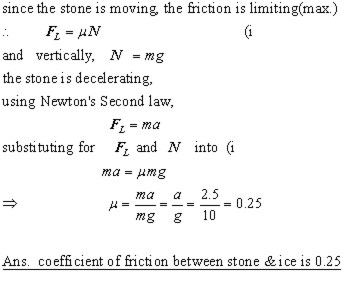
A 2 kg mass in limiting equilibrium rests on a rough plane inclined at an angle of 30 deg. to the horizontal.
Show that the coefficient of friction between the mass and the plane is √3 / 3 .
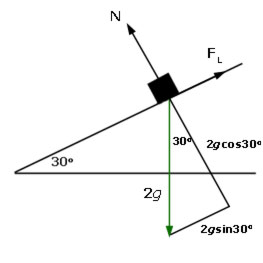
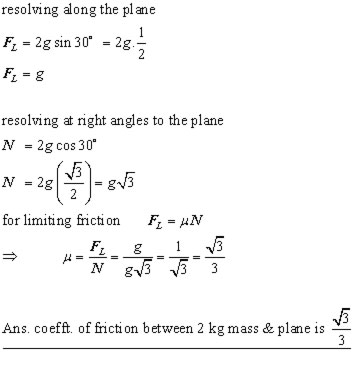
The Angle of Friction
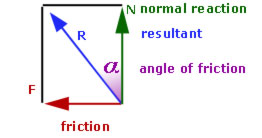
If the resultant between N and FL is R , and it is inclined at an angle α(alpha) to the normal N, then we can write equations for FL and N in terms of R .
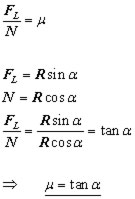
= tan -1(0.5773) = 30o (the angle of the plane)

No comments:
Post a Comment